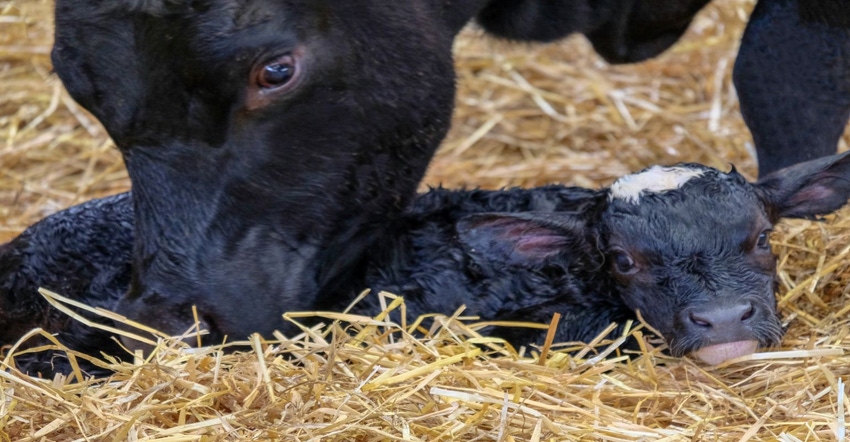Preparing for winter calving
Don't wait for a problem-- instead be prepared before calving.
January 17, 2023

Calving during the winter months can present some unique challenges. Cold and/or wet weather, higher birth weights, fewer hours of daylight and in most herds this is the time of year when we, as producers, are the primary source of nutrition provided in the form of harvested forage and supplemental feeds. What can we do to make calving in the late winter months as problem-free as possible? GET PREPARED!
Calving Kit and Facilities
Prior to Calving Season it is important to take inventory of our facilities. Our working pens, chutes and alley ways need to be in good working order. If we have a calving barn or indoor facility remember to check cameras, batteries and light bulbs. We want all facilities ready BEFORE we find ourselves assisting that first heifer in the calving process.
To be fully prepared, have the following list of supplies in a cooler, bucket or tool box:
Colostrum and feeding bottle
Flashlight and batteries
OB Sleeves
Non-detergent lubricant
Antiseptic
OB chains and calf puller
Paper towels
Rope halter
Large cloth towel
Also, understand the three stages of bovine parturition (also covered in the Cow-Calf Corner newsletter this week). It’s important to know what to expect when a cow or heifer goes into labor in order to know when and how to provide assistance.
Account for Cold Weather
Cold, wet weather drives up cow nutritional requirements and cows should be fed accordingly. The Mesonet Cattle Comfort Advisor is an excellent tool for monitoring weather conditions and the impact they have on cattle. According to the Mesonet Cattle Comfort Advisor, cow energy requirements increase 1% for each degree the cattle comfort index is below 32 degrees F. This energy need will double to 2% if the animal is wet to the skin. In regard to new born calves, consider that in the birth process they are leaving the cozy environment of their mother’s womb at a temperature of 101-102 degrees F and hitting the ground at temperatures as much as 100 degrees colder. Add in rain, snow, muddy ground or high winds and the situation can be catastrophic for newborns. While nature equips calves with a limited amount of brown adipose tissue which is burned internally to create heat for survival. Extreme cold can overwhelm the ability to create enough internal heat and hypothermia can occur. Calves suffering from hypothermia are more susceptible to naval infections, pneumonia and scours. Best management practices for cold weather calving include:
Provide adequate wind breaks, shelter and bedding so cows can separate and calve in a warmer, dryer, protected environment.
Plan ahead to provide the additional protein and energy needs of cows during the final trimester of pregnancy and the beginning of lactation.
Sort first calf heifer from cows and manage accordingly. Heifers are inexperienced and more likely to need a higher level of attention during calving and the initial stages of claiming and raising a calf.
Check out the Mesonet Cattle Comfort Advisor to get an idea of increased feed needs as we move into February.https://www.mesonet.org/index.php/weather/map/cattle_comfort_conditions
You May Also Like


.png?width=300&auto=webp&quality=80&disable=upscale)
